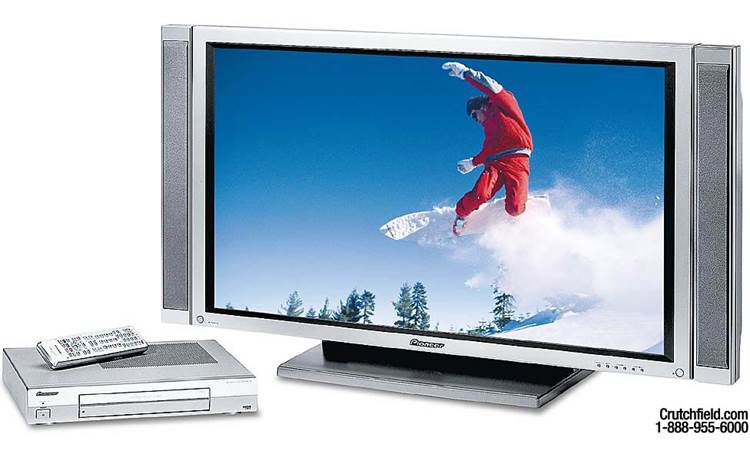

#Pioneer plasma 42 1080p#
#Pioneer plasma 42 tv#
The TV has all inputs including HDMI inputs, as well as Component and RCA inputs. The Kuro brings out the very best in analog and HD signals, noticeably improving detail, color and depth on analog signals. With The Kuro, there is no need for compromise. Though high-definition is a major leap forward, much of what is broadcast today is still standard-definition. The revolutionary video processor takes the most demanding scenes, the fastest fast break, the most furious action, and renders every scene with a clarity that has never been seen before in a home theatre.Įverything is clear, crisp, rich, and gorgeous. Motion has never been this realistic, this pure or this clear.

A picture so stunningly clear you can recognize faces in a crowd. The Pioneer Kuro 42" PDP-4288XG will change the way you watch television. Pioneer PDP428XG 42" 1080p Multi-System Plasma TV Features Description:
#Pioneer plasma 42 movie#
#Pioneer plasma 42 720p#
Plasma TV technology was slow to make the transition from 720p to 1080p, and did not reach 4K when major manufacturers discontinued production. Plasma displays have been losing market share every year to LCDs, and Panasonic has been posting losses and cutting jobs in the last few years. In October 2013, Panasonic announced that it would stop producing plasma display TVs, closing the plasma panel production factory in December 2013 and ending sales in March 2014. Pioneer has since sold many of the Kuro's patents to Panasonic, the only other significant television manufacturer that concentrated on plasmas, and many of the latest Panasonic Viera plasma panels utilize the Kuro's technologies. Pioneer announced in February 2009 that they would exit the TV business by March 2010 to concentrate on car and audio/visual systems. There were no Kuros to compete at the mainstream or low-end segments, which were dominated by LCDs. Pioneer was particularly hurt by this shift as the Kuro was positioned as a premium HDTV, being generally more expensive than the mass market Panasonic Viera plasma, while other plasma display manufacturers like Samsung and LG had demoted their plasmas to the low end. Plasma TVs had peaked in popularity from 2004 to 2006 and had been steadily losing ground to LCD TVs ever since.

ĭespite being critically acclaimed, the Kuro was commercially unsuccessful. Sony had unveiled the XEL-1 OLED display which has even better contrast than the Kuro including darker blacks however at that stage OLED technology was still plagued by reliability and lifespan issues. Reviewers said that the Kuro represented the best-in-class technology, as its images were the most vibrant and colorful of any HDTV at the time, whether LCD, LED-LCD, or plasma. Hard-core home theater enthusiasts and home cinema aficionados stated that the Kuro was the only HDTV to achieve the "true black". The Kuro's plasma technology reduces light emissions from black areas of the screen to such a degree that at its maximum brightness, the contrast ratio was considered “almost infinite”. "Kuro" means black in Japanese.Īt the 2008 Consumer Electronics Show, Pioneer unveiled its "Ultimate Black" Kuro. Kuro was the brand name that Pioneer Corporation used for its line of high-definition plasma televisions.


 0 kommentar(er)
0 kommentar(er)
